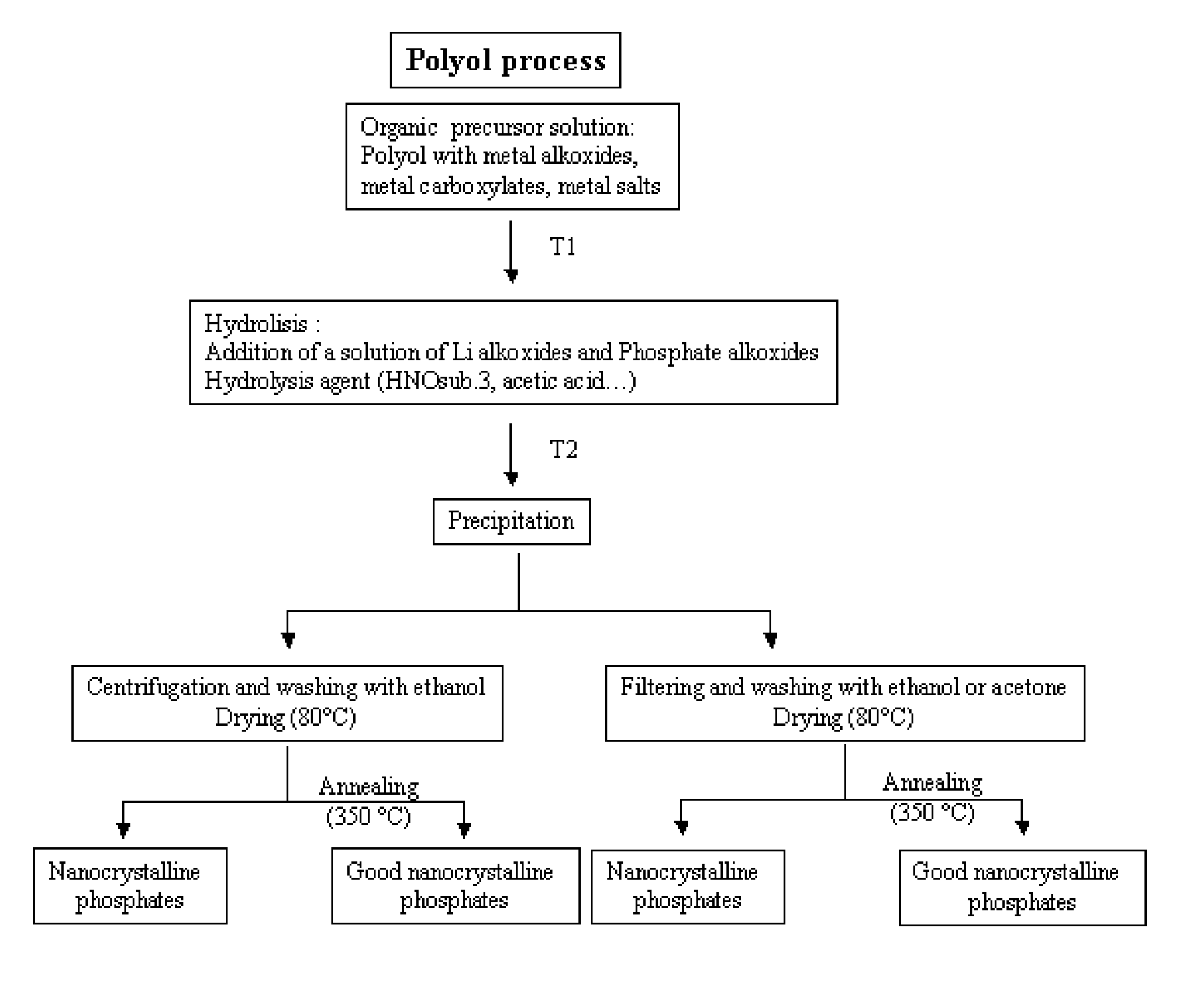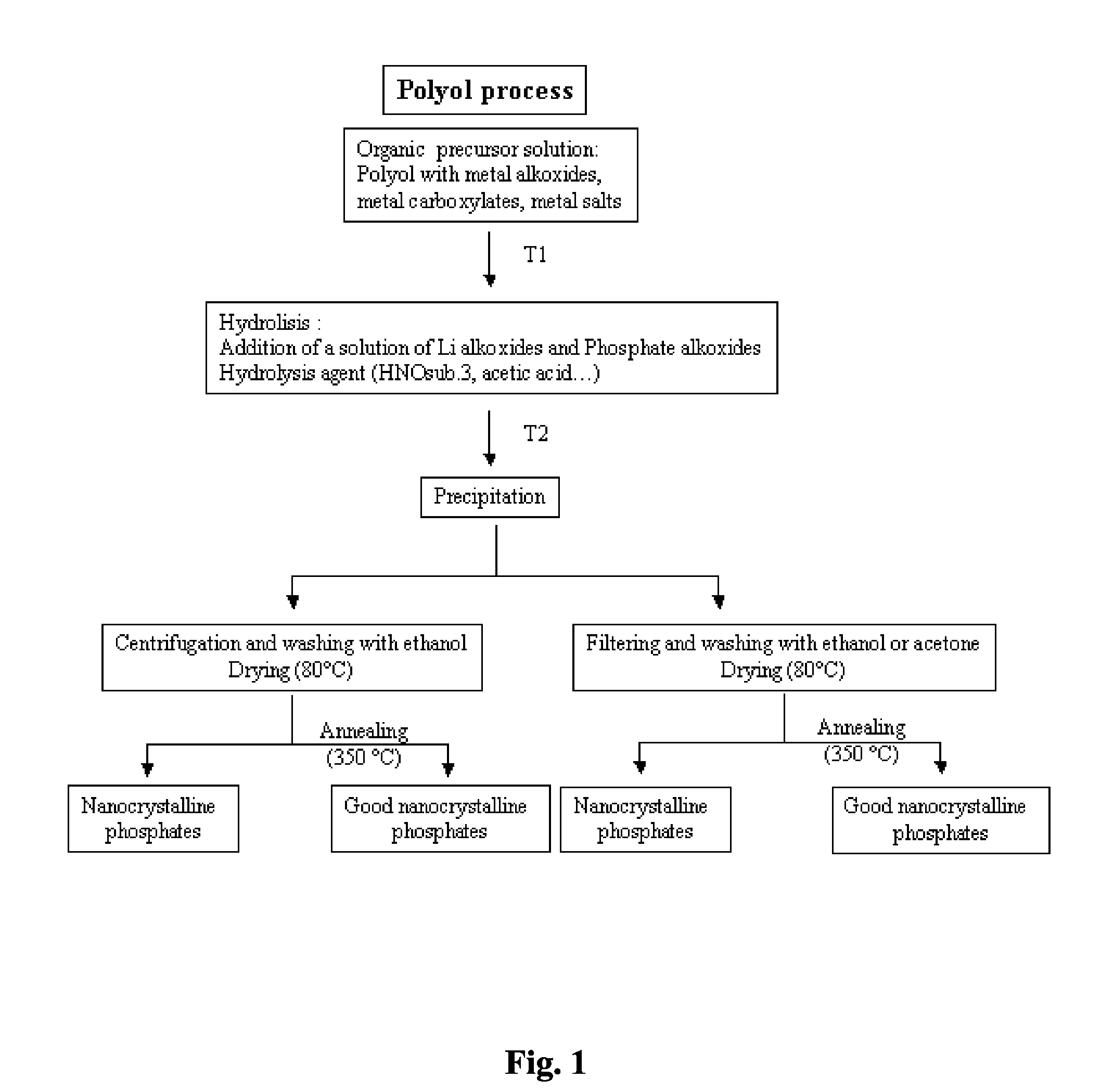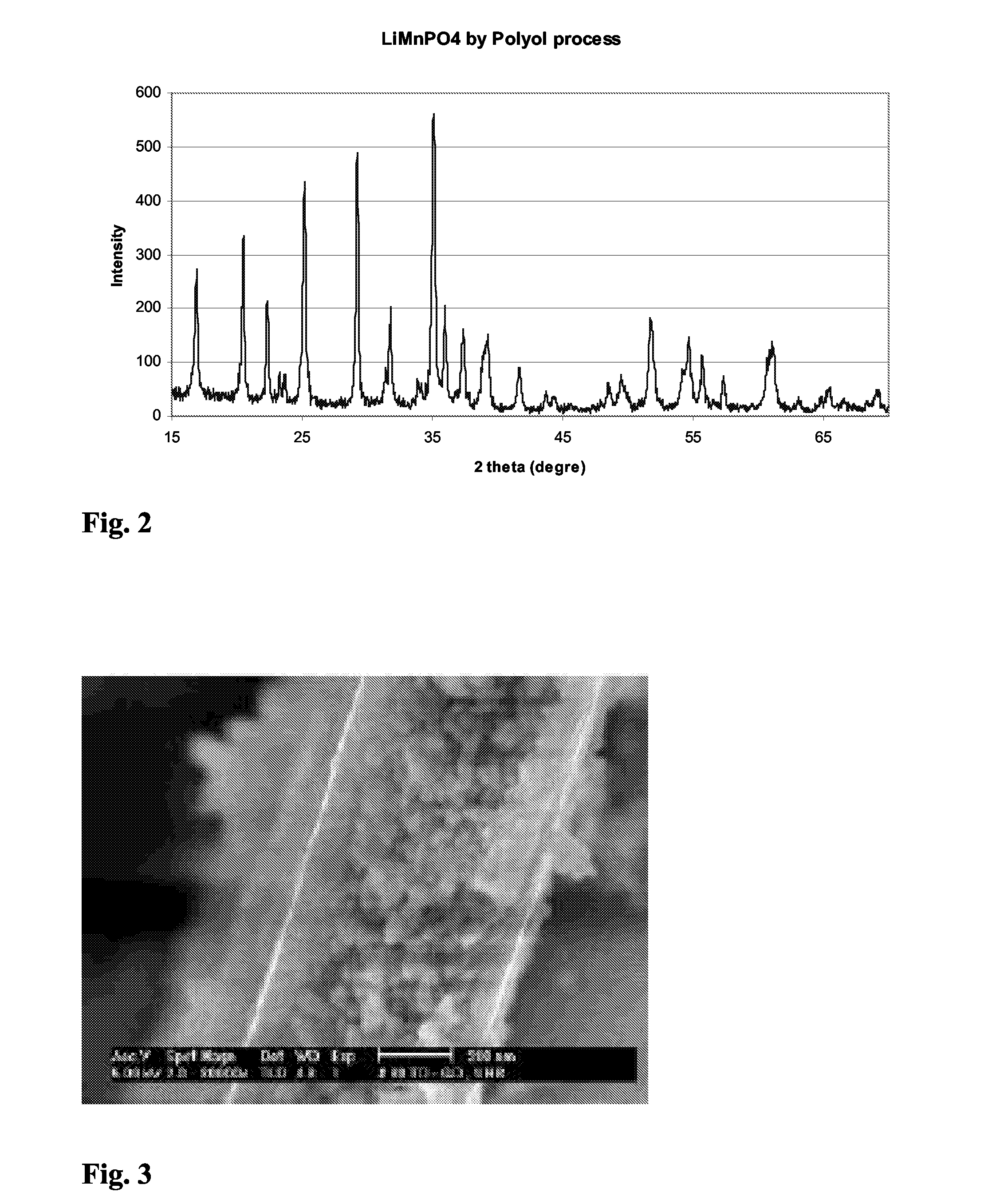Synthesis of nanoparticles of lithium metal phosphate positive material for lithium secondary battery
a lithium ion battery and positive material technology, applied in the direction of non-metal conductors, cell components, conductors, etc., can solve the problems of no better than 115 mah reversible capacity, no better than 3.5 v cell running voltage, and reduce the energy available for the lifeposub>4 system, etc., to achieve the effect of improving the electrochemical properties of the material as a positive electrode in lithium ion batteries
- Summary
- Abstract
- Description
- Claims
- Application Information
AI Technical Summary
Benefits of technology
Problems solved by technology
Method used
Image
Examples
example 1
[0042]Preparation of nanosized lithium manganese phosphate: To 100 mL of diethylene glycol, 20 mL of a solution of 1.5 mol. / L of manganese (II) acetate tetrahydrate (C4H6O4Mn (H2O)4) was added. The mixture was heated at 140° C. for about 1 hour. A dark brown solution was obtained. 2 mL of concentrated acetic acid was added to the solution. 20 ml of a solution of 1.5 mol. / L of lithium acetate dihydrate (C2H3O2Li(H2O)2) and ammonium di-hydrogen phosphate (H6NO4P) was added to the glycol solution. A brownish precipitate was formed. Under extreme agitation, the mixture was heated at 180° C. under reflux for 4 hours. To remove the diethylene glycol, the mixture was cooled down at room temperature, centrifuged and washed twice with ethanol. The precipitate was dried at 80° C. for 1 day. The material was then calcined at 350° C. for 1 hour under air.
[0043]X-ray pattern of this material indicates a pure crystallized phase of lithium manganese phosphate (LiMnPO4). The particle sizes of the m...
example 2
[0044]The powder of LiMnPO4 was placed in a 250 mL stainless steel container and ball milled with a planetary ball mill using 9 stainless steel balls of 20 mm diameter for one hour. In addition, 20% in weight of acetylene black was added to the milled LiMnPO4 and ball milled again for 3 hours. A composite of LiMnPO4 / C was then obtained.
example 3
[0045]A positive electrode composition of LiMnPO4 / C active material was prepared by mixing of the active material (composite) with a carbon black (C55 from Shawinigan) and a binder (polyvinylidene difluoride—PVDF) with the mass ratio (90:5:5), in N-methyl-2-pyrrolidinon. The slurry was then coated on an aluminium foil, serving as the current collector. The N-methyl-2-pyrrolidinon was subsequently evaporated in air at 100° C. for 1 hour and 120° C. for 30 minutes on titanium hot plate. The electrode was then dry at 160° C. overnight under vacuum.
PUM
| Property | Measurement | Unit |
|---|---|---|
| particle size | aaaaa | aaaaa |
| particle size | aaaaa | aaaaa |
| temperature | aaaaa | aaaaa |
Abstract
Description
Claims
Application Information
 Login to View More
Login to View More - R&D
- Intellectual Property
- Life Sciences
- Materials
- Tech Scout
- Unparalleled Data Quality
- Higher Quality Content
- 60% Fewer Hallucinations
Browse by: Latest US Patents, China's latest patents, Technical Efficacy Thesaurus, Application Domain, Technology Topic, Popular Technical Reports.
© 2025 PatSnap. All rights reserved.Legal|Privacy policy|Modern Slavery Act Transparency Statement|Sitemap|About US| Contact US: help@patsnap.com



